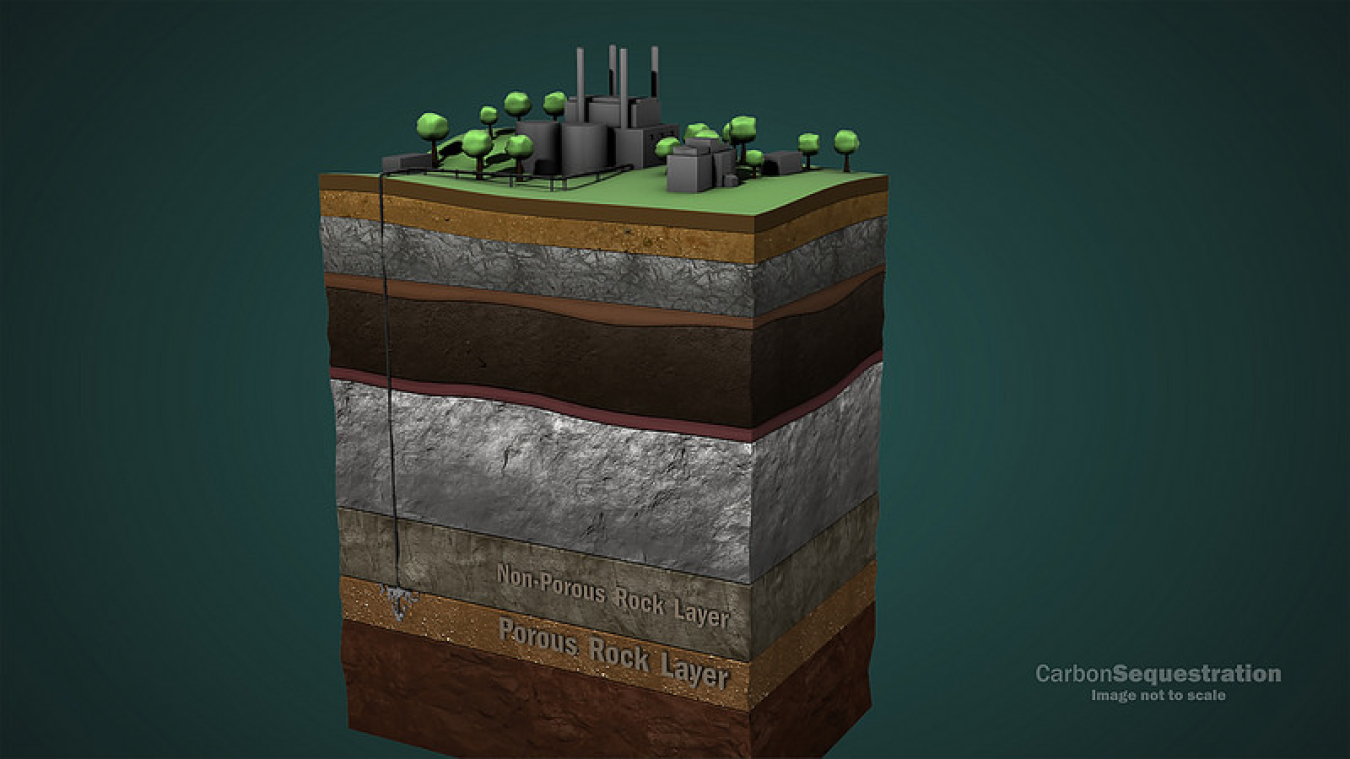Los Alamos National Laboratory has recently published groundbreaking research in Nature Communications that introduces an improved method for monitoring CO2 storage. This innovative approach promises to enhance the understanding of how CO2 affects the properties of rocks in geological storage sites, significantly improving the accuracy and reliability of carbon storage monitoring techniques.

>> In Other News: Agreement Reached to Build Appalachian Regional Clean Hydrogen Hub (ARCH2)
Advancements in Rock Physics Modeling
The research team at Los Alamos National Laboratory has developed a novel rock physics model. This new model delves into the intricate processes that occur when CO2 is stored underground, providing a more comprehensive understanding of how carbon dioxide interacts with geological formations.
The current standard method for monitoring underground CO2 storage utilizes the Biot-Gassmann equation. This model is effective in characterizing the elasticity of rocks filled with fluid, such as CO2. However, it has notable limitations. The Biot-Gassmann equation does not account for the long-term effects of CO2 exposure on the shear and bulk moduli of the rocks. This oversight can lead to inaccuracies in the data used for rock physics modeling.
Neala Creasy, the lead author of the research, highlighted these limitations: "Biot-Gassmann’s equation is used quite commonly (especially for geologic carbon storage). Based on experimental work, this approach doesn’t consider nonlinear stress dependence and chemical reactions that weaken the rock frame."
New Monitoring Approach
Recognizing the limitations of the Biot-Gassmann equation, the Los Alamos team proposed a new approach that incorporates more detailed aspects of the CO2 storage process. The novel rock physics model captures significant variations in elastic properties, particularly in shear-wave velocity, which were previously unaccounted for. These findings are consistent with results from laboratory tests, marking a significant improvement in the accuracy of CO2 monitoring through seismic tracking.
This advancement is crucial for the field of carbon storage. By better understanding how CO2 moves through underground reservoirs, scientists can detect potential leaks more effectively. This leads to safer and more reliable carbon storage projects, ultimately contributing to more effective climate change mitigation strategies.

Implications for Future Carbon Storage Projects
The new monitoring method proposed by Los Alamos National Laboratory is poised to revolutionize carbon storage projects. With improved accuracy in monitoring, stakeholders can plan and execute these projects with greater confidence. The ability to detect leaks early and understand the behavior of CO2 in storage sites ensures the long-term viability and safety of carbon sequestration efforts.
This research underscores the importance of continual innovation in the field of carbon storage. As global efforts to combat climate change intensify, having reliable and advanced monitoring techniques is essential. The work done by Los Alamos National Laboratory represents a significant step forward in this ongoing endeavor.
For more information on this groundbreaking research, you can visit the Los Alamos National Laboratory website. Additionally, you can read the full study published in Nature Communications for a detailed exploration of the new rock physics model.
Enhancing Environmental Security
Beyond improving CO2 storage monitoring, the research from Los Alamos National Laboratory has broader implications for environmental security. Effective carbon sequestration is a key component in reducing greenhouse gas emissions and combating global warming. The improved monitoring techniques developed by Los Alamos will help ensure that carbon storage sites are secure and effective over the long term, thus playing a critical role in global climate strategies.
Mark Martinez, a senior scientist at Los Alamos, emphasized the broader impact of their work: "By enhancing our ability to monitor and verify CO2 storage, we are taking significant steps towards ensuring the environmental safety and effectiveness of carbon sequestration projects. This is crucial for our efforts to mitigate the impacts of climate change."
The Next Chapter
Los Alamos National Laboratory's new research offers a promising advancement in the monitoring of CO2 storage. By addressing the limitations of existing methods and proposing a more accurate model, the team has paved the way for safer and more reliable carbon storage projects. As the fight against climate change continues, innovations like this are crucial in ensuring that carbon sequestration efforts are both effective and sustainable.
The contributions of Los Alamos National Laboratory will undoubtedly play a pivotal role in shaping the future of environmental protection and climate change mitigation. With these advancements, the path towards a more sustainable and secure future becomes clearer and more attainable.
Subscribe to the newsletter
Daily decarbonization data and news delivered to your inbox
Follow the money flow of climate, technology, and energy investments to uncover new opportunities and jobs.
Latest issues
-
How Duke Energy Just Made Hydrogen History
Inside This Issue 💧 Duke Energy Florida Unveils Nation's First System Capable Of Producing, Storing And Combusting 100% Green Hydrogen ✈️ Technip Energies’ Hummingbird Technology Powers LanzaJet’s...
-
The $9B Deal That Almost Didn't Happen
Inside This Issue 💰 The $9B Deal That Almost Didn't Happen ⚖️ IMO Rules Understate Benefits of Utilising Captured Carbon, Says GCMD 🌾 Corteva and bp Launch Biofuel Feedstock Joint Venture Etlas 🔬 ...
-
Nebraska's 3-Plant Ethanol CCS Gamble Pays Off Big
Inside This Issue 🌽 Nebraska's 3-Plant Ethanol CCS Gamble Pays Off Big 🧊 New Evaporative Crystallizer Design Accelerates Direct-Air Carbon Capture ✈️ From SAF to Solar: DHL’s Bold Steps Toward Net...
Company Announcements
-
Capstone Green Energy Holdings, Inc. (the "Company” or “Capstone”) (OTCQX: CGEH), together with its subsidiaries, a leading provider of clean technology solutions using ultra-low emission microturb...
-
Duke Energy Florida, a subsidiary of Duke Energy, unveiled its DeBary Hydrogen Production Storage System in Volusia County, marking the first demonstration project in the United States capable of u...
-
ESG Clean Energy, LLC ("ESG"), developers of Net Zero Carbon Footprints and clean energy solutions for distributed power generation, announced today it has signed a licensing deal with Viking Energ...
-
LanzaTech Achieves Guaranteed Performance At Japan MSW-To-Ethanol Plant
Collaborative pilot at Kuji facility showcases robust ethanol yields using LanzaTech’s fermentation technology Achieved ethanol yields exceeding guaranteed performance for over 14 consecutive d...